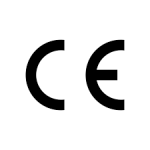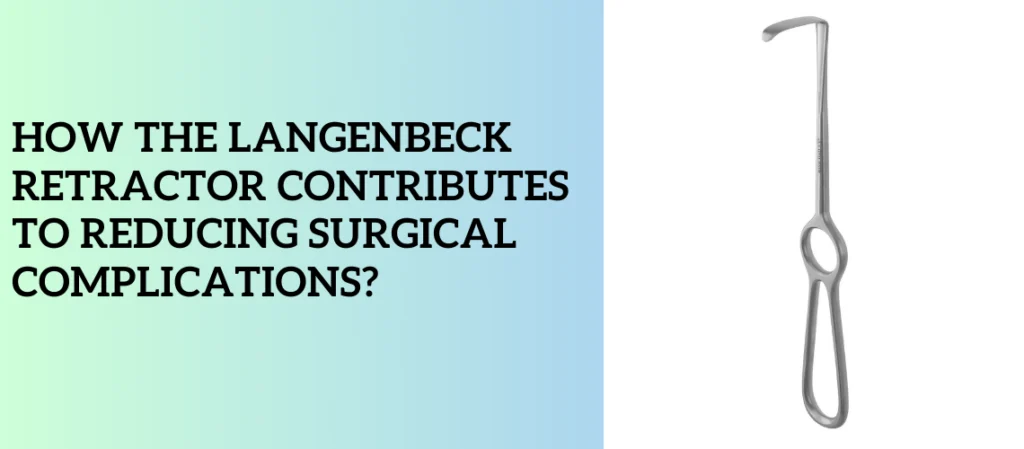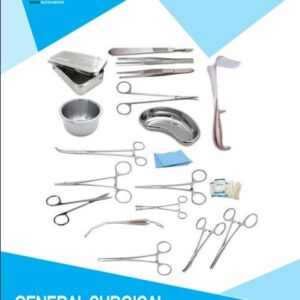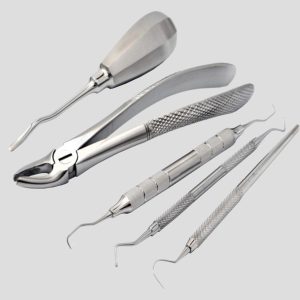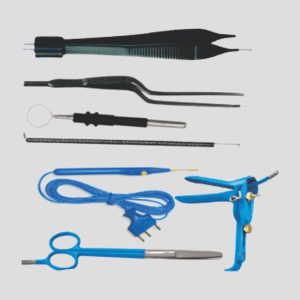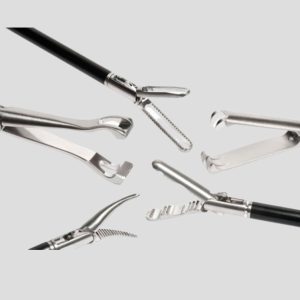The Langenbeck retractor is a key instrument in the field of surgery, popular for its role in improving visibility and accessibility within surgical sites. It is a critical instrument in minimizing complications during surgery. Thus, it helps in maintaining a wide working view, reducing tissue injury, and enabling enhanced accuracy.
Overview of the Langenbeck Retractor
The Langenbeck retractor, a kind of hand-held surgical instrument created in the 19th century by German surgeon Bernhard von Langenbeck. It is one of the most simply, yet effective retractors. You will find it commonly used in general surgery, orthopedic surgery as well as trauma settings. This design consists of one curved blade and a single or double flat handle. It is typically long to accommodate different depths/sizes of sutures. Its stable grip on the tissues, and the non-cutting and rounded end of its blade with a moderate curvature make it indicated in many surgical specialties.
Importance of Soft Tissue Retraction in Surgery
Retraction is one of the key components of several surgeries and hotels surgeons to retract tissues, organs, or other structures. Well, the retraction needs help to keep a clean vision that helps precise incision and other moves. On the other hand, poor retraction can create a blurred field of vision with zero surgical safety. This helps in unintentional trauma to surrounding tissue. It comes up with longer operative times and postoperative sequelae such as necrosis or infection.
Each type is suitable to minimize tissue injury and interference. Thus, it is allowing the retractor to hold the tissues in place, such as with a Langenbeck retractor. It features a curved blade that allows it to act as a lever. The blunt tip prevents concentrating high pressure on one area of tissue (which would lead to tearing). Such a balanced design decreases the chances of classic complications associated with unnecessary or uneven soft tissue pressure (cardinal principle).
It Contributes to Enhanced Visibility and Precision
The Langenbeck retractor surgery tools is available primarily to improve visualization at the surgical area. It decreases the risk of complications from surgery. In intricate procedures, for example, abdominal surgeries or orthopedic repairs maintain the tissues in a securely retracted position. This helps in in order to permit the surgeon to visualize exactly what he or she is doing. With a surgeon having the ability to operate with as near zero hazard zone, it helps in achieving better surgical outcomes.
The Langenbeck retractor further helps in getting precision through controlled, stable retraction. The essence of Langenbeck is holding one end inside the site and the other left outside. Its curved base allows for gentle yet firm retraction in delicate procedures alongside nerves or blood vessels (e.g. vascular surgery). Such a degree of control allows scalpels and blades, minimizing risk for incidental damage with fewer consequent surgical complications.
Does it Help in Minimizing Tissue Trauma?
Tissue trauma is a frequent complication in surgery, often due to improper retraction techniques. If pressure is maintained over a prolonged period of time, then there could be bruising, tissue ischemia or even necrosis. This happens if you use retraction with excessive force and/or sharp edges. It has blunt, round edges that apply very little pressure on tissues. The Langenbeck retractor is associated with a lower risk of seroma and necrosis while providing excellent retraction.
The Langenbeck retractor reduces direct trauma to tissues, thus facilitating faster healing and lower rates of wound infections post-operation. This becomes particularly important in long cases where tissue may be held away from their blood supply for several hours leading to ischemic damage. This obviously will never happen with the Langenbeck’s design, which disperses pressure over a greater area and retains more tissue for enhanced recovery.
It Adds Significance of Versatility Across Surgical Specialties
All variations of Langenbeck retractors play a crucial role in minimizing complications during surgery. This can be used in several types of surgeries, including general surgery, orthopedic surgery, ENT (ear nose and throat), and gynecology. For example, in orthopedic surgery, it is common to use a Langenbeck retractor for soft tissue retraction around bones so that the surgeon can have increased access to the area of repair without harming adjacent structures. Likewise, in ENT and gynecological surgery, it is designed to be compact and mobile enough to allow retraction while minimizing the risk of collateral tissue damage in limited spaces.
That same flexibility means surgeons can use one tool for more kinds of procedures, reducing the learning curve with new instruments and potentially decreasing operation times. Surgeries that are done quicker and more efficiently tend have a lower incidence of complications, as longer surgeries can lead to a greater incidence of infection and other issues.
Conclusion
In short, the Langenbeck retractor is an indispensable surgical instrument that through its design allows for less complication at the surgical site due to better visualization, accuracy and minimal tissue disruption. With its consistent, steady, and safe retraction capabilities makes Langenbeck retractor one of the most important surgical tools.

